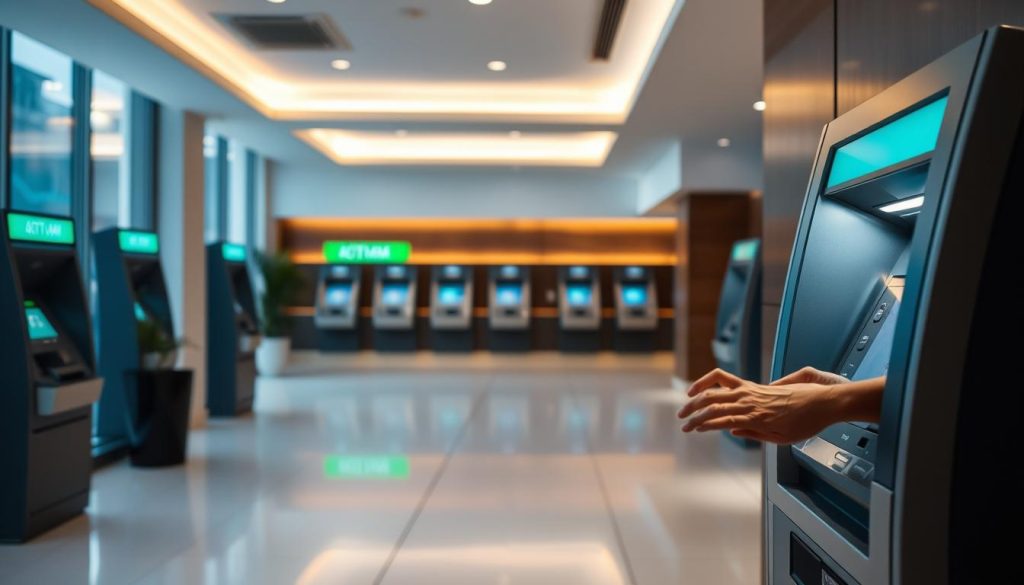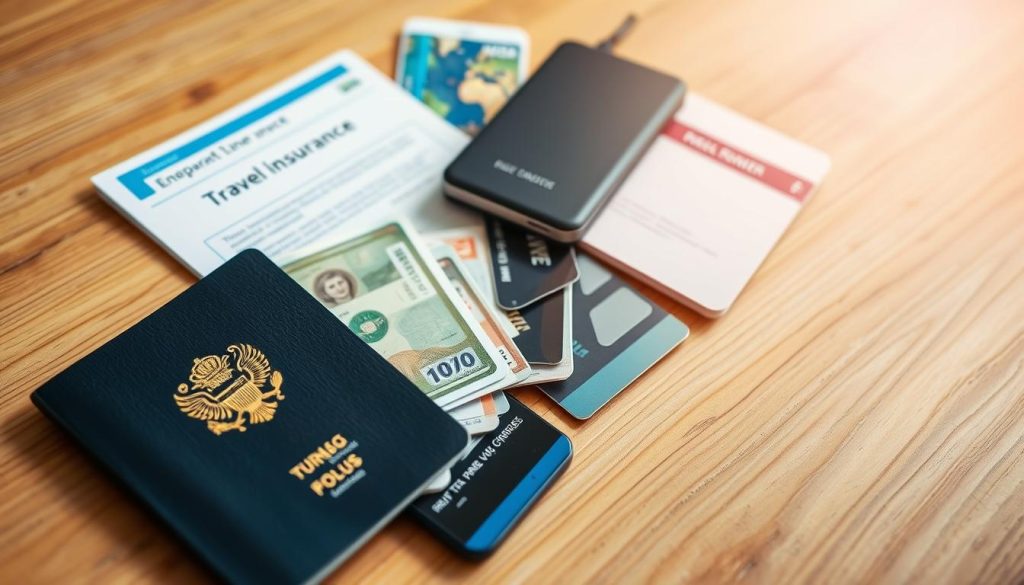✓ Accommodations✓ Flights✓ Rental Cars✓ Tours & Activities
Did you know that tourists from the US contribute significantly to the economy, driving a high volume of currency exchange activity? If you’re planning a trip, understanding how to handle your money is crucial for a smooth experience.
The official currency is the Australian Dollar (AUD), with denominations like 5c, 10c, $1, $2, and larger notes. Knowing these can help you navigate everyday transactions with ease.
Exchange rates and fees can impact your budget. For example, 1 USD equals about 0.92 AUD as of now. Using a travel debit card or checking dynamic currency conversion rates can save you money on purchases and withdrawals.
Whether you’re using cash, a credit card, or an ATM, being informed about fees and conversion tips ensures you get the most out of your trip. Let’s dive into the essentials of managing your money efficiently.
Introduction to Australian Currency and Payment Systems
Understanding the local currency system can make your journey smoother. The official currency is the Australian Dollar (AUD), issued by the Reserve Bank of Australia. It’s subdivided into 100 cents, with coins ranging from 5c to $2 and banknotes from $5 to $100.

Carrying a mix of cash and cards is essential for flexibility. While cards are widely accepted, having some cash on hand is useful for smaller transactions or in remote areas.
An Overview of the Australian Dollar (AUD)
The AUD is one of the most traded currencies globally. Its polymer banknotes are durable and feature unique designs. Coins include 5c, 10c, 20c, 50c, $1, and $2 denominations, making it easy to handle everyday purchases.
Importance of Cash, Cards, and Travel Money Options
Knowing when to use cash versus cards can save you money. For example, cash is ideal for small vendors, while cards are better for larger expenses. Dynamic currency conversion can lead to higher fees, so always opt for local currency transactions.
Before your trip, check your bank’s forex rates to ensure you get the best deal. This simple step can save you significant costs on exchange rates and fees. Being prepared with the right payment methods ensures a hassle-free experience.
Australia: Ultimate Travelers Guide to Currencies & Payments – In Depth
Navigating a new country’s currency system can feel overwhelming, but breaking it down makes it simple. Understanding the technical details, like codes, symbols, and denominations, ensures you’re prepared for every transaction.
Understanding the Currency Code, Symbols, and Denominations
The Australian Dollar (AUD) is the official currency, represented by the symbol $. This symbol is used for both coins and banknotes, making it easy to identify. The AUD is divided into 100 cents, with coins available in 5c, 10c, 20c, 50c, $1, and $2 denominations.
Banknotes come in $5, $10, $20, $50, and $100. Each note features unique designs and is made of durable polymer. Knowing these denominations helps you handle everyday purchases, from a cup of coffee to a hotel stay.
Understanding the AUD’s structure is crucial for avoiding unnecessary fees. For example, when using a debit card or making an ATM withdrawal, opting for local currency can save you from poor dynamic currency conversion rates.
“Being informed about the currency system ensures you get the most out of every dollar spent.”
Here’s a quick breakdown of why each denomination matters:
- Coins: Ideal for small transactions like tipping or buying snacks.
- $5 and $10 notes: Perfect for everyday expenses like meals or transportation.
- $50 and $100 notes: Best for larger purchases or emergencies.
By familiarizing yourself with the AUD, you’ll navigate payments confidently, whether you’re using cash, a credit card, or a travel debit card. This knowledge not only saves you money but also makes your trip smoother and more enjoyable.
Securing the Best Exchange Rates and Avoiding Extra Fees
Avoiding extra fees and securing the best rates requires a bit of planning and research. Whether you’re exchanging currency before your trip or during, knowing where and how to do it can save you money.

Comparing Bank and Online Forex Service Options
Traditional banks often charge higher fees and offer less competitive rates compared to online forex services. Platforms like Wise provide better value by using the mid-market rate and charging lower fees.
For example, ordering foreign cash online can yield better rates than local banks or airport kiosks. Always compare your options to ensure you’re getting the best deal.
Avoiding Poor Rates at Airports and Tourist Spots
Exchanging money at airports or tourist spots often comes with high markups and extra fees. These places take advantage of convenience, but the cost can add up quickly.
Instead, plan ahead and exchange your currency before your trip or use a debit card with low withdrawal fees. This way, you’ll avoid unnecessary charges and get more for your money.
“Checking the mid-market rate before exchanging ensures you’re getting a fair deal.”
Here are some practical tips to keep in mind:
- Use online forex services for better rates and lower fees.
- Avoid exchanging money at airports or tourist-heavy areas.
- Pre-book your currency exchanges to lock in favorable rates.
- Always opt for local currency transactions to avoid poor dynamic currency conversion rates.
By following these tips, you’ll save money and make your trip more enjoyable. A little preparation goes a long way in securing the best exchange rates and avoiding extra fees.
Using ATMs, Cards, and Alternative Payment Methods in Australia
Managing your money efficiently while traveling involves knowing the best ways to use ATMs and cards. Whether you’re withdrawing cash or making purchases, understanding the fees and options available can save you both time and money.

How to Manage ATM Withdrawals and Transaction Fees
When using an ATM, look for machines affiliated with major banks like Commonwealth Bank or Westpac. These often have lower fees compared to private ATMs. Always withdraw in the local currency to avoid poor dynamic currency conversion rates.
Plan your cash needs in advance to minimize frequent withdrawals. This reduces the number of transaction fees you’ll incur. For example, withdrawing a larger amount once is more cost-effective than multiple smaller withdrawals.
Here are some tips to keep in mind:
- Use debit cards for withdrawals to avoid credit card charges.
- Check your bank’s daily withdrawal limit to maximize your cash amount.
- Avoid ATMs in tourist-heavy areas, as they often charge higher fees.
Using a travel debit card or prepaid card can also help you manage exchange rates and fees more effectively. These cards often offer better rates and lower charges compared to traditional bank cards.
Always check with your bank before your trip to understand their international transaction fees. Some banks, like Charles Schwab, offer fee-free withdrawals abroad, making them a great option for travelers.
By following these steps, you’ll ensure your payment methods are both convenient and cost-effective. A little preparation goes a long way in making your trip smoother and more enjoyable.
Travel Money Management and Safety Essentials
Keeping your money safe while traveling is just as important as planning your itinerary. Whether you’re exploring bustling cities or remote areas, knowing how to manage your funds securely ensures a stress-free experience.

Tips for Preventing Fraud and Keeping Funds Secure
Fraud can happen anywhere, but being proactive can minimize risks. Start by splitting your cash into multiple locations. Use a money belt, secure pockets, or separate bags to store your funds. This way, even if one stash is compromised, you’ll still have access to your money.
Using a travel debit card or prepaid card is another smart move. These cards reduce the need to carry large amounts of cash and often come with lower fees for international transactions. Always opt for local currency when making purchases to avoid poor dynamic currency conversion rates.
Monitor your account regularly for any suspicious activity. If you notice unauthorized transactions, report them to your bank immediately. Many banks offer fraud protection, so check with them before your trip to understand their policies.
Strategies for Managing Cash on the Go
Carrying cash is essential, but it’s important to do so wisely. Keep only the amount you need for the day and store the rest in a secure location, like your hotel safe. This reduces the risk of losing all your funds at once.
When using an ATM, choose machines affiliated with major banks. These often have lower fees and are less likely to be tampered with. Always shield your PIN and avoid using ATMs in poorly lit or isolated areas.
Here are some additional tips to keep your money safe:
- Use a credit card for larger purchases, as they often offer better fraud protection.
- Carry a backup card in case your primary one is lost or stolen.
- Avoid exchanging currency at airports or tourist spots, as they typically offer poor rates.
By following these strategies, you’ll ensure your travel funds are secure and accessible throughout your journey.
Currency Exchange and Payment Options in Major Australian Destinations
Exploring major cities often means adapting to their unique payment habits and exchange practices. From Canberra’s government hubs to Melbourne’s vibrant streets, each place has its own rhythm when it comes to handling currency and transactions.
Local Practices in Cities Like Canberra, Melbourne, and Beyond
In Canberra, cash is less commonly used compared to cards, especially in government offices and modern cafes. Melbourne, on the other hand, embraces a mix of payment methods, with many vendors accepting credit cards and mobile payments. Smaller towns may still prefer cash, so it’s wise to carry some for convenience.
Using Prepaid Travel Cards and Dynamic Currency Conversion Wisely
Prepaid travel cards are a great way to manage your money without worrying about fluctuating exchange rates. They allow you to lock in a favorable rate before your trip. However, be cautious with dynamic currency conversion (DCC). This service lets you pay in your home currency, but the rate offered might include hidden fees.
“Always opt for local currency when prompted at ATMs or point-of-sale terminals to avoid DCC charges.”
Practical Tips for Everyday Transactions
For smooth transactions, compare exchange rates at local banks or reputable forex services. Avoid exchanging currency at airports or hotels, as they often charge higher fees. Use a debit card for ATM withdrawals to minimize costs, and notify your bank before traveling to prevent card blocks.
Here are some quick tips to save money and time:
- Use prepaid travel cards for better rate control.
- Carry a mix of cash and cards for flexibility.
- Check your bank’s international transaction fees in advance.
By understanding these regional practices and tools, you’ll navigate payments with ease and confidence, making your trip more enjoyable.
Conclusion
Handling your money wisely while traveling ensures a stress-free and enjoyable experience. By understanding currency options, managing exchange rates, and avoiding extra fees, you can make the most of your trip.
Plan ahead by carrying a mix of cash and cards. Use debit cards for ATM withdrawals to minimize costs. Always opt for local currency to avoid poor dynamic currency conversion rates.
Revisit this guide as a quick reference during your journey. Being well-prepared leads to smoother transactions and memorable adventures. Share your experiences and tips to help others manage their payments abroad.
The above is subject to change.
Check back often to TRAVEL.COM for the latest travel tips and deals.






